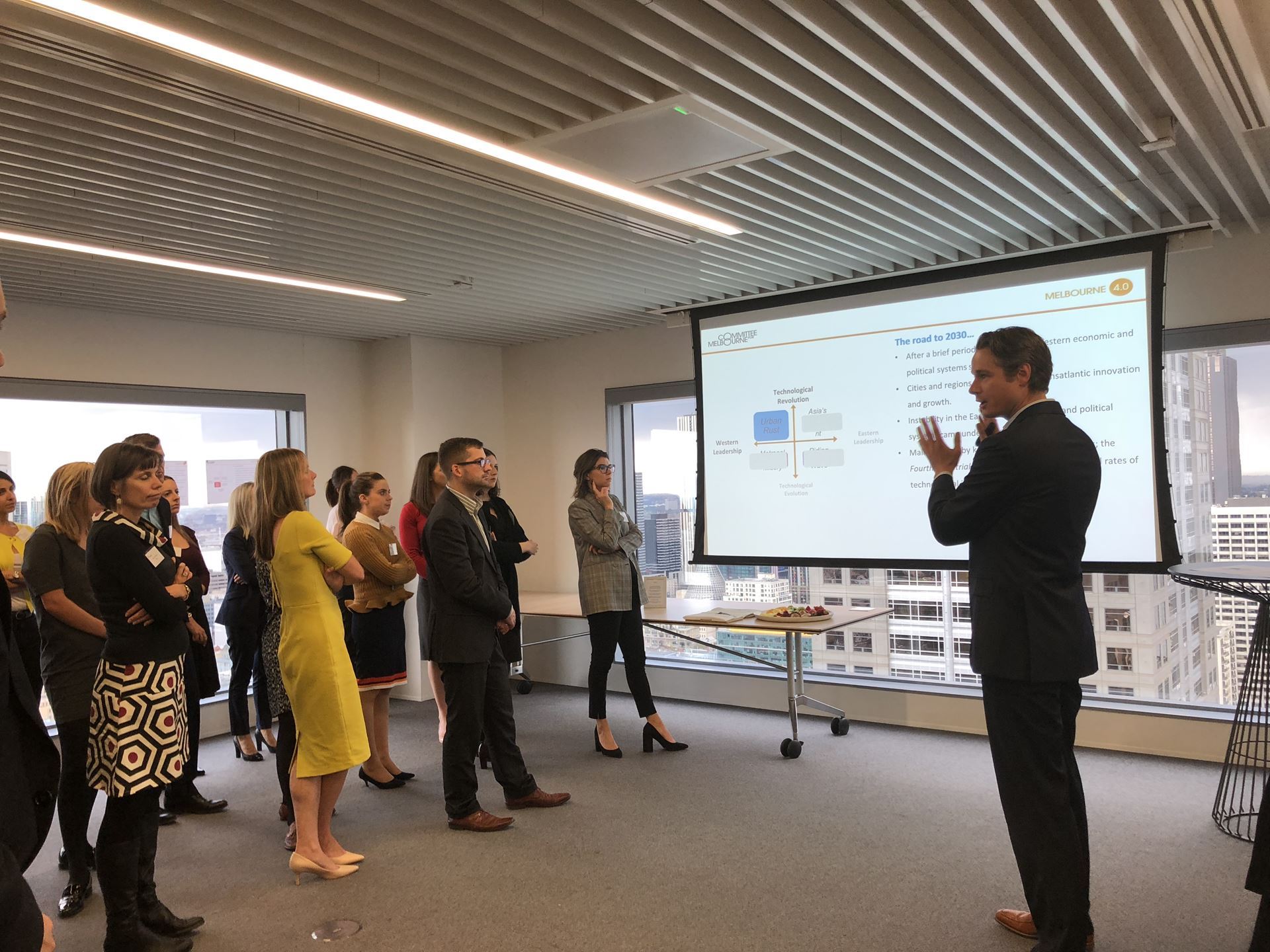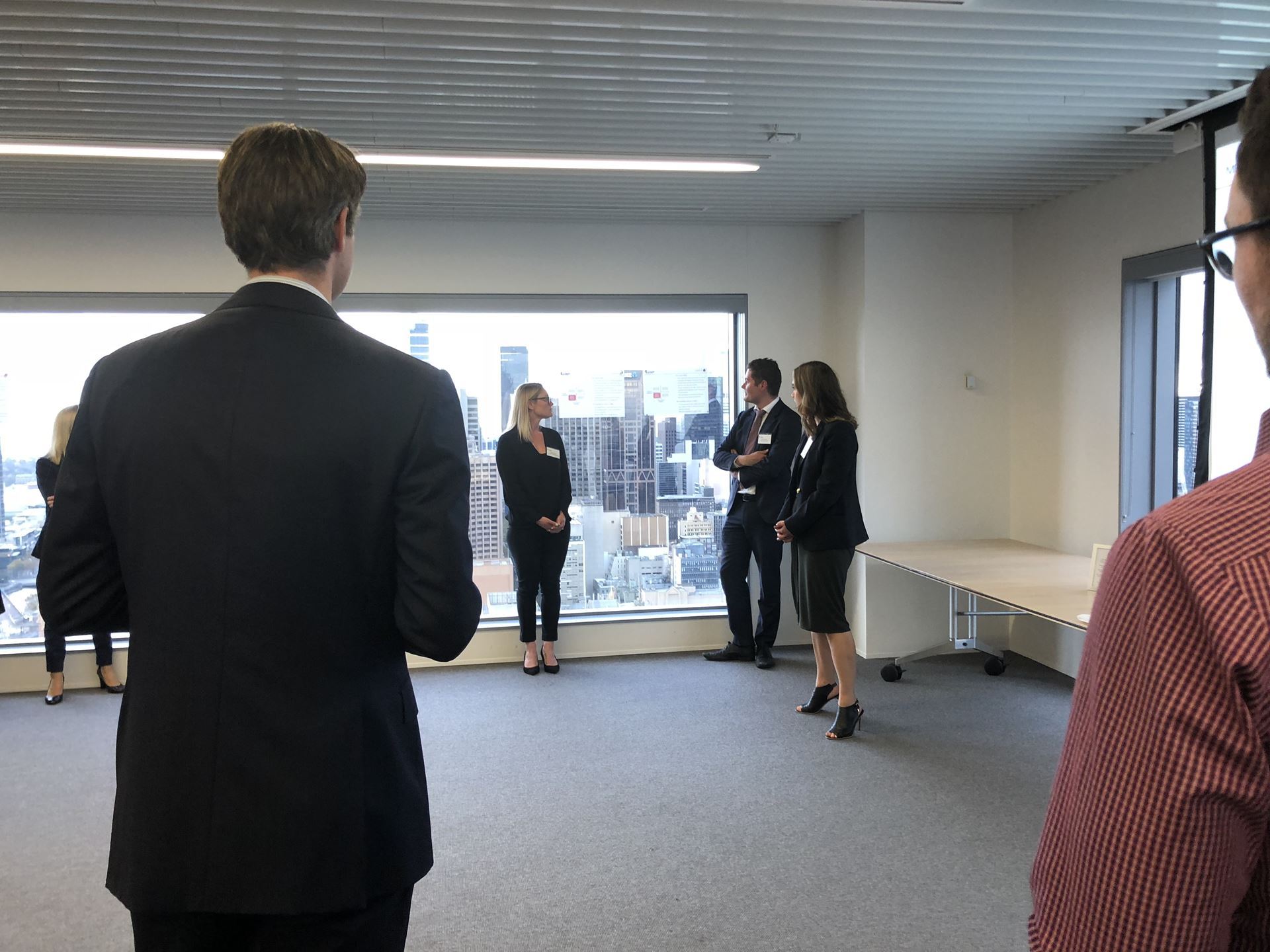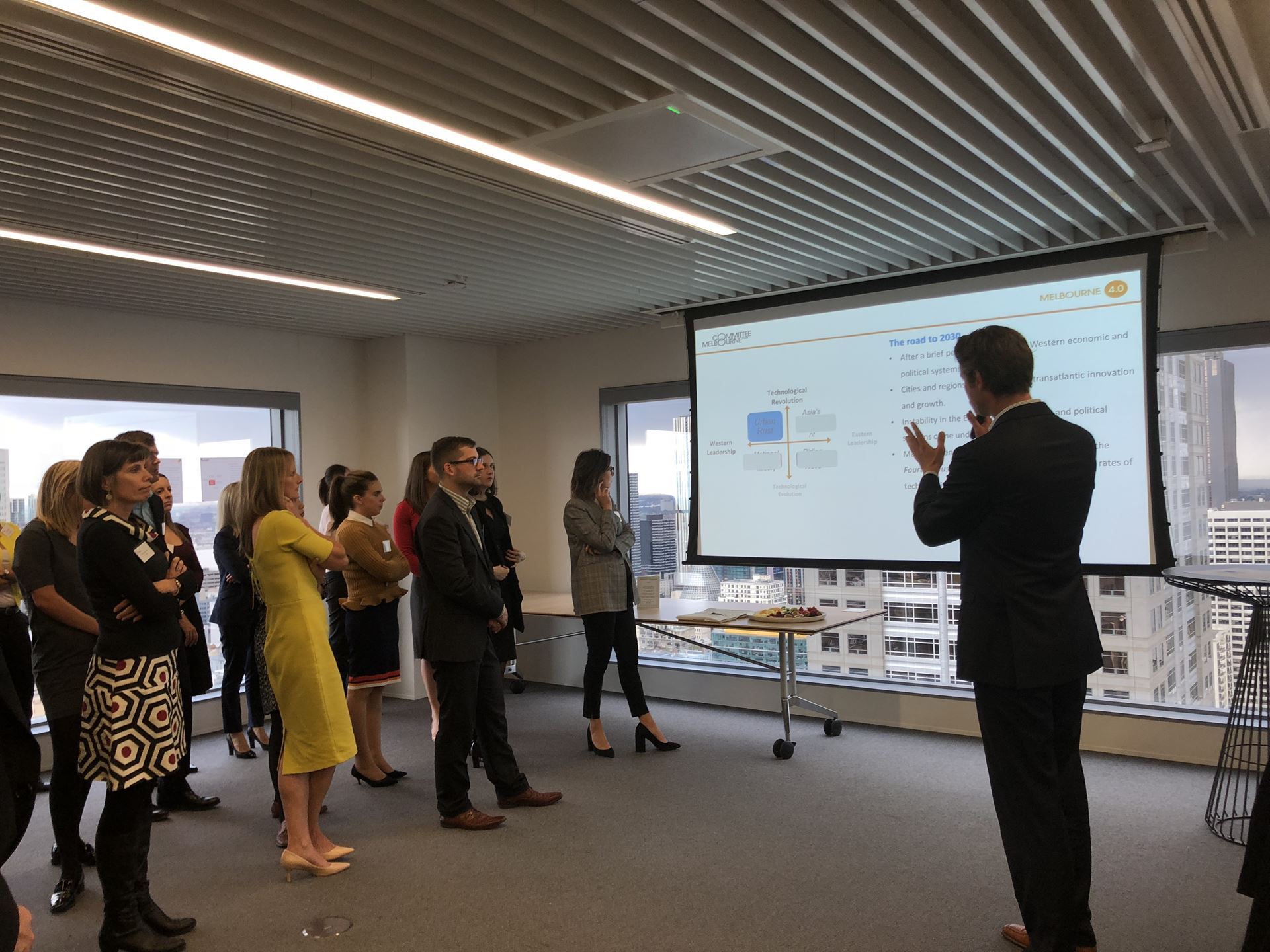- Home
- How to plan for an unpredictable future
“We always overestimate the change that will occur in the next two years and underestimate the change that will occur in the next 10 years.” – Bill Gates As marketing and business development professionals, ICON members spend a lot of time helping their organisations plan for the future. But what future should you be planning for? Sander van Amelsvoort, Director of Policy and Research at the Committee for Melbourne, raised this very question at our latest Melbourne Forum. In doing so, he devised four potential outcomes that could become a reality in 2030, then asked ICON members how well their companies would react to each one. In van Amelsvoort’s view, these scenarios will be spurred on by geopolitical shifts and technological change, which will affect our lives in more ways than we currently expect. With this in mind, the Committee for Melbourne is exploring different strategies it could implement to ensure we’re well equipped to thrive regardless of the future outcome. Van Amelsvoort reminded the audience how important it was for the Committee to be doing this, since “you can’t predict the future, but you can explore the range of plausible futures”. |
“ We always overestimate the change that will occur in the next two years and underestimate the change that will occur in the next 10 years. ” – Bill Gates |
The Committee for Melbourne realised that for our city and its economy, ‘businesses as usual’ isn’t going to cut it as they began exploring possible futures. “The future was quite confronting,” van Amelsvoort said. He then identified some key characteristics that apply to most possible futures and posited four scenarios that could very possibly occur in the near future. “At its core, scenario planning looks at the uncertainty in the external environment that your organisation has no control over and looks at how you can deal with them, so you don’t get blindsided,” he said. Van Amelsvoort then got the audience off their feet and asked them to stand next to the scenario they felt their own organisations were the best equipped to deal with. |
“ You can’t predict the future, but you can explore the range of plausible futures. ” |
The first scenario, ‘Urban Rust’, sees Western economic and political systems become stabilised, while the East’s growth is stunted by too much political strain. This drives the fourth industrial revolution and makes Western regions the engines of major innovation and growth. In this scenario, Australia’s economy has become a ‘technology taker’, constantly dipping in and out of recession, with most of Australia’s talent moving to the bigger Western powers such as Europe and the US. The second potential scenario is ‘Asia’s Bargain Basement’, in which Eastern economies have continued their historical growth, and most capital and talent has fled to the prosperous and stable East. In this scenario, Asian mega-cities and regions are driving the fourth industrial revolution and producing exponential rates of technological innovation. North America and Europe have not recovered from polarisation to the point of isolationism. Australia’s economy has grown,but failed to generate the kinds of exciting high-paid jobs required by the transformed global economy. |
“ At its core, scenario planning looks at the uncertainty in the external environment that your organisation has no control over and looks at how you can deal with them, so you don’t get blindsided. ” |
Another option is ‘Metropolitan Misery’, where economic and political cooperation has returned to the West after a period of diminished trade that exposed structural flaws in Asian economic and political systems. There has been a period of ‘chaotic innovation’ caused by serious cybersecurity issues and catastrophic technology failures. These led governments to clamp down on cybersecurity, increasing regulations and caused a ‘techlash’ that produced widespread unemployment. The Asian ‘implosion’ and Australia’s reliance on Asian growth have caused a severe and sustained recession in Australia, and ‘gateway to Asia’ is no longer considered an asset. The final scenario is ‘Riding the Wave’ – a world where prolonged polarisation and isolationism have had a crippling effect on the West, while the East’s long-term focus has created a fertile ground for continued economic success. The East is now home to two-thirds of the global middle class, and represents a prosperous and confident Asia. The fourth industrial revolution has developed into a human evolution of sorts. Significant parts of the economy are now operating in the busy, productive middle ground of the world’s most lucrative and competitive playing field. Which of these scenarios is your organisation best equipped to deal with and thrive in? If you want more information about Committee for Melbourne check out this video: https://vimeo.com/181713173 |
|
|
|
|
This Insight is related to the The Melbourne Forum 2018 held on 10 May 2018. For more details on this event, please click here.
|



